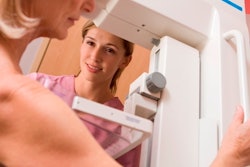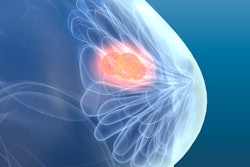Substance abuse disorder and serious mental illness are tied to lower likelihood of breast cancer screening, according to findings published October 14 in the American Journal of Preventive Medicine.
Researchers led by Benjamin Allar, MD from Brigham and Women's Hospital in Boston also found that most other races and languages had significantly higher odds of screening compared to white and English-proficient women.
“Defining and understanding the interplay of these variables can guide policymaking and identify avenues to improve breast cancer screening for vulnerable or traditionally under-resourced populations,” Allar and co-authors wrote.
While breast cancer screening rates have overall increased, health disparities continue to persist in this area. Previous reports indicate that while screening rates are “relatively similar” between women who are Black, white, and Hispanic, Black women are more likely to undergo screening at lower-resourced facilities and have longer intervals to assess abnormal mammography findings.
Allar and colleagues wanted to study the impact of several sociodemographic and provider-level factors on breast cancer screening in a safety-net health system. It included 11,962 women in the study. The overall screening rate among these women was 69.7%.
The researchers also reported that of the total, 63.6% of the women were non-white, 72.3% had public insurance, and 44.3% had limited English-language proficiency. Additionally, 4.9% of the women had a substance abuse disorder and 27.3% were diagnosed with serious mental illness.
The team found that the following factors had statistically significant differences in screening rates: race, ethnicity, language, insurance, marital status, smoking status, serious mental illness, substance abuse disorder, obesity, high risk for breast cancer, provider gender, provider specialty, and number of primary care physician (PCP) visits per year (all p < 0.05).
The researchers also found that the highest screening rates were found in patients of Hispanic race, Latino ethnicity, Spanish language, and those with commercial insurance (all p < 0.001). Also, women with a substance abuse disorder or serious mental illness, as well as former or current smokers, were less likely to be screened (all p < 0.001). Patients who had more PCP visits in the past year were more likely to be up to date on screening (p < 0.001). Patients with PCPs who were female or had Internal Medicine board training had higher screening rates than their counterparts (p = 0.005 and p = 0.011, respectively), and women who had more PCP visits within the past year more likely to be up to date on screening (p < 0.001).
Finally, the team found that women with PCPs who were female (p = 0.005) or had internal medicine board training (p = 0.011) had higher screening rates than their counterparts.
On multivariable analysis, the researchers found that all ethnicities except “Other” had higher odds of receiving screening compared to white women. Also, women with serious mental illness or substance abuse disorder, as well as current or former smokers had significantly lower odds of screening.
| Likelihood of breast cancer screening by variable |
||
|---|---|---|
| Variable |
Odds ratio |
p-value |
| White |
N/A (reference) |
N/A (reference) |
| Asian |
1.03 |
0.76 |
| Black |
1.26 |
0.001 |
| Hispanic |
1.39 |
< 0.001 |
| Other |
1.19 |
0.024 |
| Substance abuse disorder |
0.5 |
< 0.001 |
| Serious mental illness |
0.88 |
0.011 |
The study authors wrote that their results show that “there are vulnerable subpopulations within a safety-net system that are not defined purely by insurance barriers or living in a wealthier neighborhood.”
“These disparities highlight the intersectional impact of socioeconomic status; measuring only the median household income or the presence of insurance status may not be sufficient to calculate differences in care,” they added.
The authors also wrote that their data shows the critical value that safety-net systems provide in ensuring equitable breast cancer care.
The full results can be found here.



















